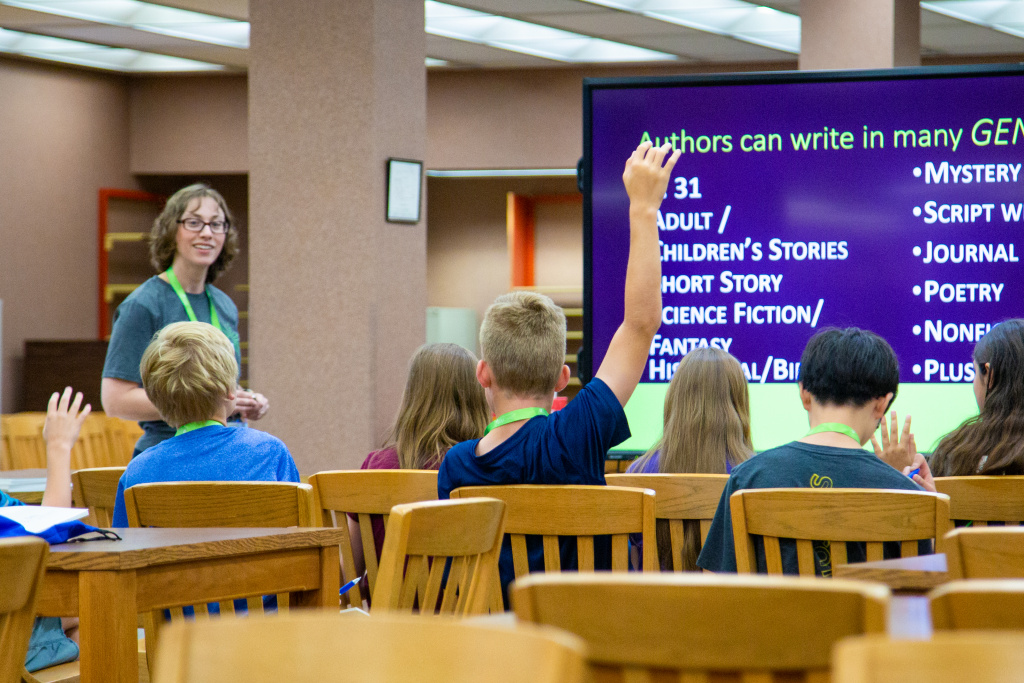English teachers often face apathy from students who would rather skip the details and move on to areas they deem more valuable. After all, who cares if you speak well or not? Writing essays and reports—does anyone ever use that in life? Google probably has the answer a student needs anyway.
The reasoning of the text-speak era can discourage a teacher, especially when trying to force old-school, “turn to the next page” methods on modern learners. Adding some diversions can make the necessary learning more interesting while still meeting the objectives and standards needed to succeed well. These diversions are not unrelated fillers thrown in as an aside to lessons. Rather, they are purposeful additions to the lessons to reach different learners and reveal different perspectives.
Start Fresh
Thinking of ideas for spicing up lessons can be intimidating. Whether you are a new teacher sitting down with a textbook for the first time or a seasoned teacher who needs to revamp and modernize some lessons, keep your objectives before you. You are trying to reach students with certain information that they need for life. They need to learn how to use that information to serve the Lord effectively. You may have a textbook, but the textbook is the tool, not the lesson itself. So, start by thinking through the make-up of your students and the various skills they will need using language.
Reach different learning styles
Many teachers, especially English teachers, have a strong read/write learning style. It is easy for them to come up with activities and lessons that reach their own type of learner. The majority of the learners in the classroom, though, are quite likely kinesthetic, visual and auditory learners. The abundance of spoken and written words starts to sound like a mush of “blah, blah, blah” after a while. Even though the teacher may have enjoyed the lesson and lecture, did the students in the classroom learn? So, make students be engaged by having them move, draw and speak. Working with partners, using individual whiteboards (or even paper), drawing graphic organizers and manipulating cut-up words lets students be involved. The more involved students are with the material, the more they will remember it. Let them do more than listen and work silently.
Make it real
While the rules and structure of language may not have changed dramatically, the formats for students to use language have definitely changed. Letting them practice in these formats prepares them for real-world situations they will meet. For instance, let students practice writing by blogging, discussing ideas with purpose and proof, with tools such as kidblog.org and edublogs.org. Or let them try vlogging (video blogging) with add-on tools such as Loom, Screencastify or Hippo. Use Google tools to make a website, write explanations or make presentations.
Readwritethink.org has many useful ideas for English teachers for a variety of situations and even has interactive tools teachers can use to guide students. These ideas can all happen on good old-fashioned paper too if your classroom does not have access to technology. And having a balance and diversity of technology and paper is still important, too.
Branch out
Many valuable lessons and ideas come from the way we were taught ourselves. When we consider the variety of learners and the changes in the world, we have to take the best ideas and put them into modern practices. English teachers have to be constantly learning too.
Alter tradition
Before incorporating a teaching method or activity for a particular lesson, take a moment to reflect and make sure you’re not doing something just because it always has been done that way. If it is still the best way, stick with it, but carefully consider if another method will get the attention and learning of your students better. For instance, could a poster or slide presentation allow a student to explain his understanding of a story visually better than a long report? Perhaps an infographic style would work. Whether on a poster board or in a digital format (try Canva or Adobe Spark), this shorter, more streamlined presentation may make the writing and reporting less daunting.
Allow for creativity
One of the barriers to student interest in learning is the lack of options. This forced conformity to what everyone else writes, reads or says boxes students into an exact mold. There are definitely valid times for this to happen, but if options can be given to students, teachers can promote self-directed learning and ownership of a task.
Think of the choices in an ice cream shop. We often have many choices of flavors, combinations, toppings, etc. Give students the freedom to make some choices as well. This could be in book choices, writing topics and writing formats. By giving general guidelines and even a handful of choices, English teachers can watch as students show their talents and interests.
Keeping the ultimate objectives of learning in focus will help all teachers—new and old—make lessons that are fresh, creative and current. The English language is alive, so keep the classroom alive, too, and invigorate yourself and your students.








